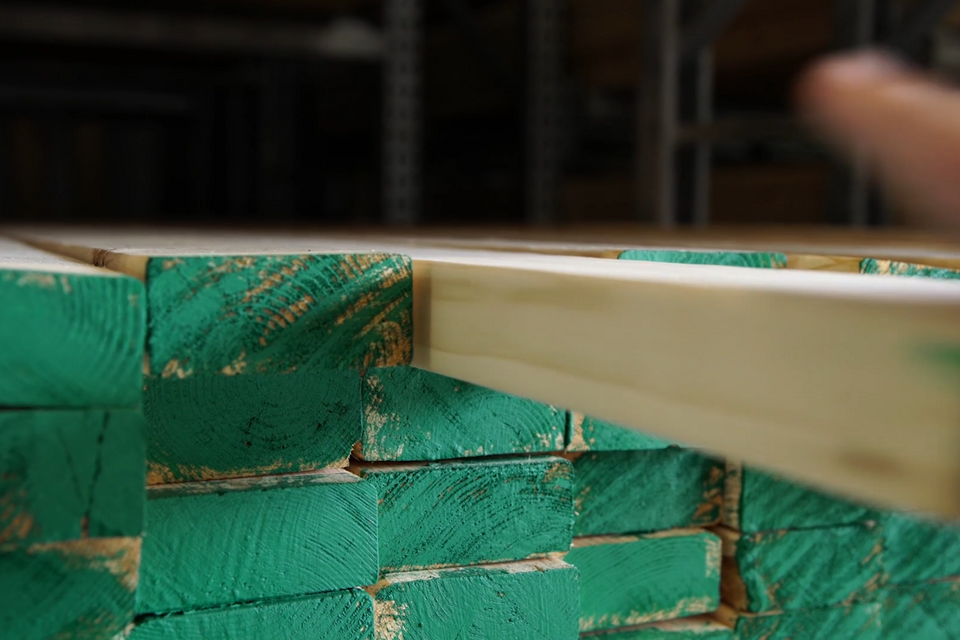A general malaise in the lumber market prevailed throughout November as economic concerns have created a heightened anxiety about the direction of the building industry. Rising interest rates and inflation are curbing demand, slowing the pace of construction and creating an uncertainty of both near and long-term home sales. In turn, many lumber buyers have stepped to the sidelines, especially with escalating reports of canceled, delayed or scaled down projects. Locally, we can say it’s been a relatively busy season with many projects getting underway, and the start of 2023 looks promising. Nonetheless, because of the softening demand across the nation, prices have bounced along a bottom for several weeks now, despite a few announcements of mill curtailments, closures and threats of rail strikes. Supplies appear to be ample for demand, and current demand is good as buyers try to secure their end-of-year needs. As a result (and as of print), prices are flat but we anticipate that they will likely gain as we move through December, a typical occurrence and one that happens because mills shut down for several weeks to retool and celebrate the holidays while dealers strive to rebuild stock levels that have been purposely thinned for annual physical inventories and end-of-year tax purposes.
Sticking doors, gaps in floors, checked decks and rotting boards. What do they all have in common? Moisture! Or, to be more specific, the lack of moisture control. Wood is one of the most versatile substances on the planet, so it’s often easy to forget that it’s an organic material that was once a living plant that grew under the strength of the sun, fed by the soil below and drew water from the ground. As most of us can recall from basic science class, a cross section of woodgrain looks like thousands of straws bunched together. These “straws” are the tubes in which, through capillary action, water is moved vertically throughout the living tree to reach its outer most lengths. However, there is a common misconception that a harvested tree ceases its moisture intake. Despite the tree being severed from its root system, water can still be absorbed through the surface grain of the wood, but most especially through the end grain (specifically, an end-cut that exposes the growth rings), where these “straws” lie in wait to wick up evaporated or condensed moisture. The moisture exchange is what is conducive to movement in wood. Absorption will swell and eventually rot the board (and also cause paint to peel) while evaporation will cause twisting, cupping, checking, and cracking. In an effort to stabilize the board, most harvested wood products used in construction today are kiln-dried, in which the “green” wet wood is put in to an oven to be dried to a moisture content that best assures its reasonable ability to reduce expansion and contraction caused by the moisture exchange (intake and output) of water. However, kiln-drying is a temporary fix. It only stabilizes wood for the short term, as once it gets exposed to any situation that will present excessively wet or dry conditions, it will do what it does naturally, which is react. As mentioned above, the exchange of moisture is what makes boards “move” (IE: swell, warp, crack, twist, or cup). Long term exposure to moisture will lead to the worse condition of rot, which inevitably will start to appear on the butt-end of a board, right where the “straws” are sucking up water. If a board is going to be exposed to moisture, it is key to seal it on six sides, but especially the ends in order to plug up the “straws”. On that note, you may notice a theme that goes throughout our industry for the care of wood products. Boards that are exposed to the elements, such as pressure treated lumber, hardwood decking, or exterior trim boards need to have their cut-ends sealed with a preservative (that often includes a fungicide and/or insecticide) that ensures that the moisture exchange is reduced, preventing movement, rot, or paint from peeling. In other instances, special care also has to be taken for items that aren’t exposed to the elements, but to the interior moisture of a household. For instance, doors must have all six sides finish painted in order to prevent them from warping and sticking while flooring must be acclimated for a period of time to the room it will be installed in, prior to installation, so that it doesn’t expand or contract wildly once it’s laid down. It’s all about mitigating the extremes and knowing how wood reacts so, if you have any questions or concerns about the best practices to use on any of these or other wood products, please be sure to contact your Shepley sales person. Our goal is to have successful installations of the products we sell, with no costly surprises, so we’ll be happy to give you the industry guidance required for the best outcome of your project. Thank you for your business and we wish you all the best throughout this holiday season!
